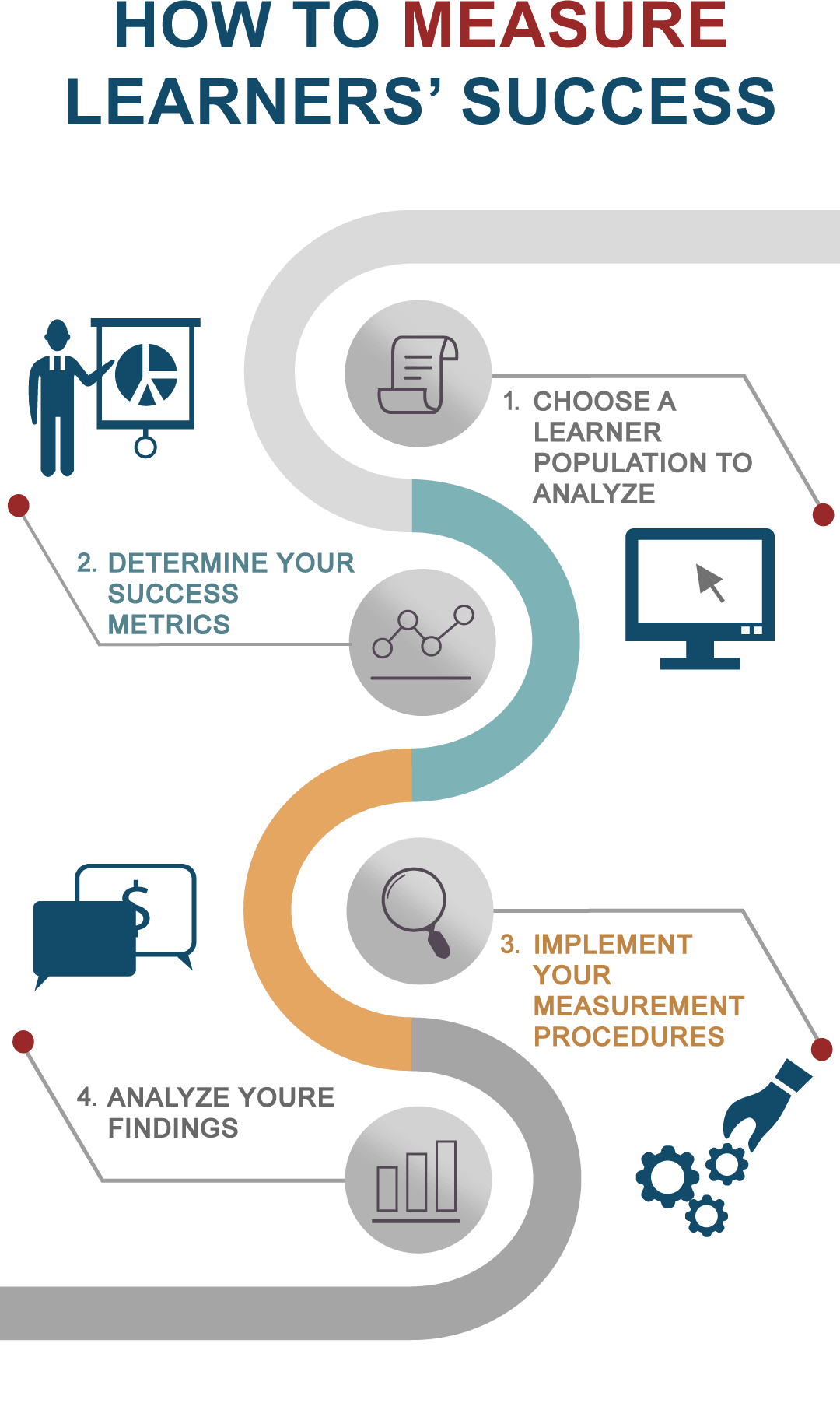How to Measure Learners’ Success [Bonus: Best Practices to Motivate Them]
![How to Measure Learners’ Success [Bonus: Best Practices to Motivate Them] How to Measure Learners’ Success [Bonus: Best Practices to Motivate Them]](/static/1b9366d8e809b177fb852b007738d2a2/f3647/Measuring-Learners-Success-Motivation-Practices-1.webp)
Did you know you can easily optimize the learning processes and outcomes of your learners? Whether they’re kids, teenagers in high school, university students, or adults looking to get better at what they do, there are two major ways you can improve both the process and outcome.
The two methods are by measuring learners’ success and motivating them to get better. In this article, we’re going to take a detailed look at how you can measure the success of your learners and the proven best practices to motivate them to perform better.
How to Measure Learners’ Success
Measuring the learning success enables you to uncover the strengths and weaknesses of the entire process — from the provider/educator and the learners’ sides. You need this assessment to review policies and improve outcomes. That said, here’s how you can measure learners’ progress:

How to Measure Learners’ Success
1. Choose a Learner Population to Analyze
Measuring success starts with selecting a learner population to analyze. In an education setting where there are various groups, subjects, or levels of learning, you can only get accurate insights by focusing your measurement on a particular learner populace.
Analyzing an entire learner populace might not be the best since different courses or learning levels have varying retention rates, performance, etc. By streamlining your analysis, you’ll get a better result. In addition, you can implement changes that are tailored to the learner populace — according to their needs.
2. Determine Your Success Metrics
After choosing a focus group, the next step is to determine the success factors to measure. Your success parameters or determining factors could be all or some of the following: engagement, performance (scores), retention, employability, and so on. These metrics can either be process or outcome-based.
Process metrics help you to measure the success of the learning procedures. On the other hand, outcome metrics measure the overall performance of a learner at the end of the term or the year.
3. Implement Your Measurement Procedures
Depending on your metrics, you’ve to institute robust procedures in order to ensure an accurate gathering of data. For instance, interviewing learners is one of the effective ways to understand the success of the learning process. Asking strategic questions (plus proper documentation) will help you score the learning process, which significantly impacts learners’ outcomes.
When it comes to outcome metrics, evaluating learners’ results or scores after an exam or test will give you a good understanding of their performance. Assuming employability is among your success criteria, you’ve to institute a strategy or testing process to help you determine if the learners are good enough — with respect to a standard you’re to determine.
4. Analyze Your Findings
After collecting data across all your measurement procedures, analyze your findings and document them properly. Depending on what your initial goals are, you can use the results to make policy and process changes that are geared towards improving the overall performance of learners.
Best Practices to Motivate Learners
In a learning environment, people can easily be discouraged if proper steps are not taken to keep them motivated. A learning institution that wants to stay ahead of the curve needs to make motivating learners an integral part of its strategy. That said, you can keep them motivated in the following ways:
1. Set Clear Learning Objectives
Letting them know the goals of the course outline will go a long way to getting them motivated and prepared to go through the training. To maximize this strategy, the best practice is to ensure the learning goals align with their individual goals. You’ve to conduct a survey to understand the expectations and development needs of learners. Next, create a course outline and learning goals that align with their personal goals.
2. Make Learning Convenient
Nothing dampens motivation faster than an uncomfortable and discouraging learning environment. Use a great Learning Management System (LMS) that makes learning easy and fun. For instance, offering access to resources on mobile devices (both online and offline) is a great way to make learning convenient. Get an idea of what they want and institute a learner-first strategy to ensure that their interests are duly taken care of.
Helpful: How to Choose the Right Software Development Vendor for Your eLearning Business
3. Reward Participation
It is a conventional practice to motivate learners by rewarding those that perform exceptionally while ignoring others. This is no longer the best approach as the current paradigm shift requires that you devise a strategy to reward participation — at all levels. Every person that participates in classes should be motivated.
Rewarding participation is a way to carry everyone along. Overlooking the rest of the class while awarding gifts to a few exceptional participants has been working for ages, but you’re bound to get a better result when everyone feels appreciated for staying engaged- irrespective of their performance in exams.
4. Giving Learning Feedback & Help Learners Improve
Identify those that are not performing well, offer them effective feedback, and find out ways to help them improve. When bad performance isn’t handled appropriately, a learner could decide to give up entirely. Devise an effective feedback strategy to help you keep learners engaged and motivated.
5. Reward Exceptional Performance
Awarding gifts to learners that outperform others has been the norm. It is still an effective strategy that motivates both the awardees and others. It can give rise to healthy competition that motivates people to work harder. The best practice is to give multiple awards based on performance.
By giving multiple gifts, a good percentage of the group will become beneficiaries — this approach motivates better than when there are only two or three persons to be honored. You can take a step further to ask them how they want exceptional performance to be rewarded. Evaluate their responses and do what suits your long-term goals.
Final Thoughts
Measuring learners’ success enables you to evaluate how effective the learning process is and to understand what to tweak in order to improve the process, engagement, and motivation. With effective strategies, you can keep learners motivated and give them a better chance of reaching both their personal goals and learning objectives.
If you’re looking to improve your learning environment with state-of-the-art eLearning tools and technologies, Aristek Systems is your go-to eLearning software development company. It provides custom-tailored education software development services for K-12, Primary, Secondary education, universities, and corporate training – across North America, Europe, Asia, and the Middle East.



